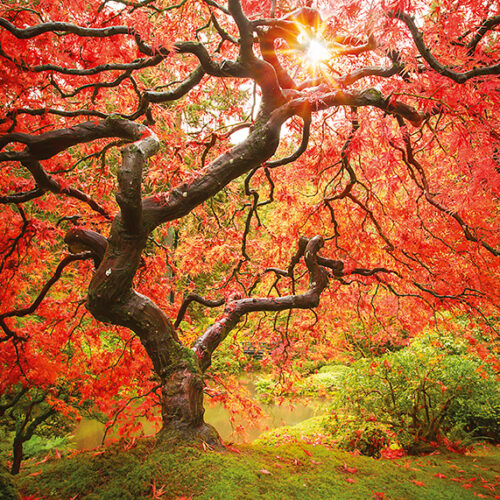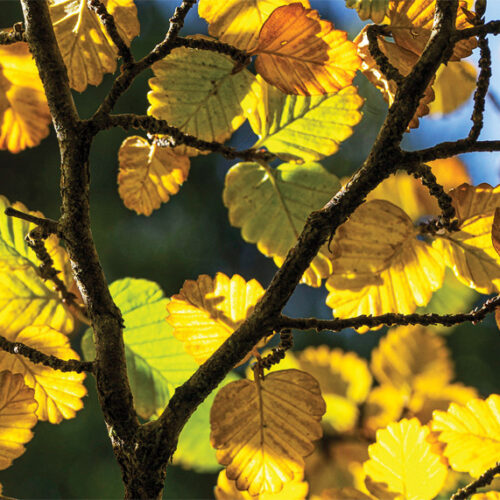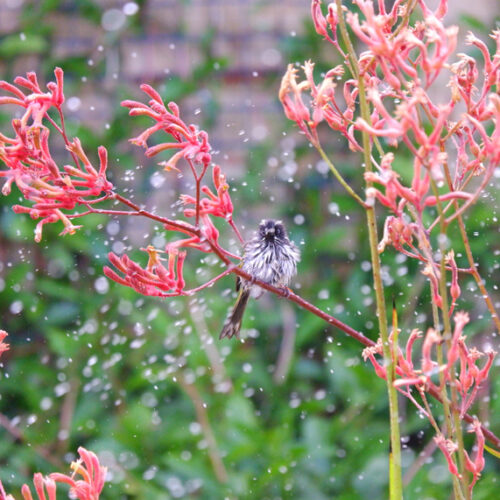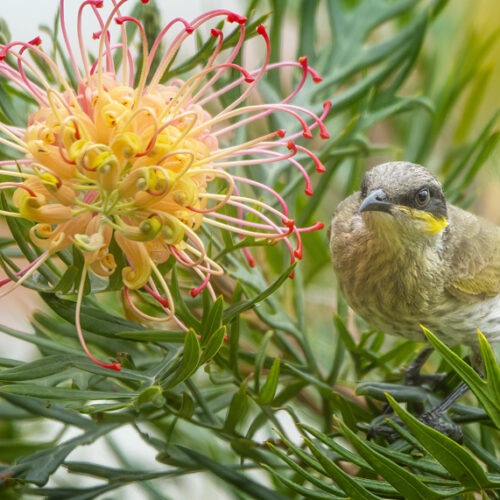Behold the banksia
2023-03-13T06:00:47+11:00
These iconic Aussie flowers bring the wow factor – as well as abundant wildlife – to any garden.
From standout flowers to unique foliage and intriguing fruiting cones, banksias have countless exquisite and distinctive physical traits. They range from spectacular trees to spreading groundcovers, and many even thrive in pots. Numerous species such as acorn banksia (Banksia prionotes) and coast banksia (B. integrifolia) flower for months, raising them to legend status with cut flower enthusiasts.
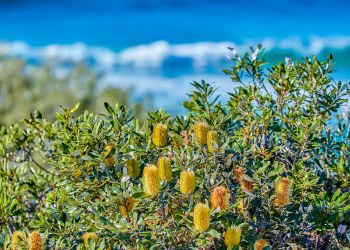
Of about 180 species (including 100 previously classified as Dryandra), all are endemic to Australia alone, bar tropical banksia (B. dentata). This 7m tree occurs also in Papua New Guinea and Indonesia, and tolerates seasonally wet soil.
Autumn is the best time to plant natives, and banksias need excellent drainage. Many species, including the heath-leaved banksia (B. ericifolia) at 2–7m tall and ‘Little Eric’ at 1.5–2m tall, cope with heavier soils but don’t like their roots sitting in water.
Here are some reasons to love this native plant:
Fantastic flowers
Every stage of the banksia flower’s development is captivating, and many varieties have exceptional inflorescences. The aptly named B. grandis has spikes up to 40cm long. Woolly banksia (B. baueri) – a 2m shrub – has huge, huggable flowers and contrasting stiff foliage, as does ‘Pygmy Possum’, a dense prostrate form of B. serrata that spreads to 3m.
The nectar-laden blooms come in (mostly) shades of yellow, orange, green and brown, and are very attractive to insects, birds and mammals. Even ‘dead’ flowers left on the plant become a food source for seed-eaters and provide a home for tiny critters.
All shapes and sizes
Quirky prostrate groundcovers such as B. blechnifolia and its ilk have thick, upright toothed foliage and cylindrical flowers in shades of pink, red, cream and rust that appear to grow straight out of the ground. Pair these with tussock grasses under an open-canopied tree for interesting textural contrast.
The eponymous ‘Roller Coaster’ is a prostrate form of the 4–15m coast banksia. At 50cm tall and 2.5m wide, it covers large embankments and rockeries with ease. ‘Sentinel’ is a handy narrow form, 2.5m tall by 1m wide. Hedge it or add it to a wide bed with a burgundy New Zealand flax and low sprawlers such as Leptospermum ‘Pink Cascade’. All forms of coast banksia are drought, salt, wind and frost tolerant.
Adaptability
Banksias grow naturally in a wide range of environments, primarily around the country’s perimeter. South-west Western Australia is a hotspot and home to honeypot dryandra (B. nivea) and scarlet banksia (B. coccinea), pictured below. Most species come from a tiny geographical range but are surprisingly adaptable to different climates and soils.
Banksias like full sun and well-drained soil, but there are exceptions. At 1–3m tall, swamp banksia (B. robur) suits wet spots and grows best as an understorey plant in temperate, subtropical and tropical climates. Its architectural form, toothed leaves and green and black flowers make it a feature!
Header image by Alamy


